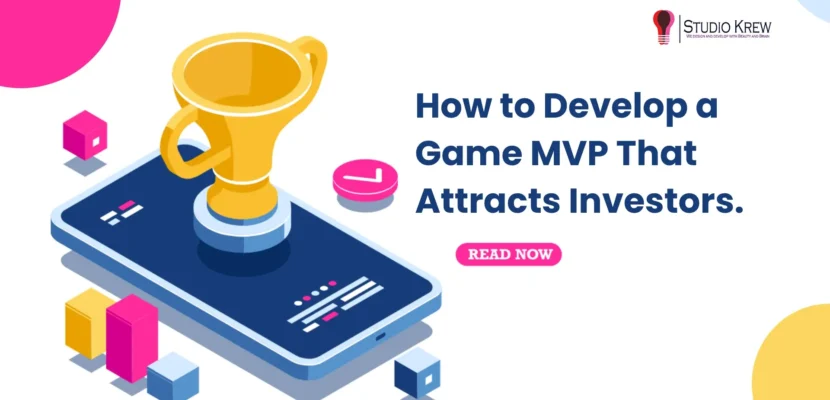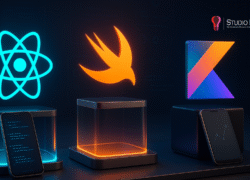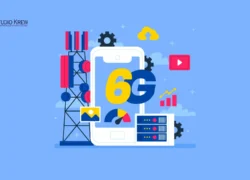In game development’s dynamic and competitive landscape, turning a creative idea into a fully realized game often hinges on one critical factor: funding. Investors hold the key to unlocking the resources needed to bring your vision to life, but they’re not easily convinced by passion or promises alone. They want tangible evidence that your game has legs—proof that it can captivate players, stand out in a crowded market, and deliver a profitable return. Enter the Minimum Viable Product (MVP), a powerful tool that bridges the gap between concept and reality.
A game MVP isn’t just a rough demo; it’s a strategic asset designed to showcase your game’s core potential while keeping development lean and focused. This means you’re not investing resources in non-essential elements but rather concentrating on the features that define your game and make it unique. It’s your chance to mitigate risks, test assumptions, and demonstrate to investors that your project is worth investment. Whether you’re an indie developer with a bold new idea or a studio refining an ambitious concept, a well-crafted MVP can make all the difference. It’s about more than just functionality—it’s about storytelling, proving viability, and building a foundation for future success.
At StudioKrew, we understand the stakes. With years of experience crafting investor-ready prototypes across mobile, PC, and web platforms, we’ve helped countless developers transform their ideas into compelling MVPs that not only secure funding but also spark excitement. Our game development services are tailored to streamline this process, ensuring your MVP works and leaves a lasting impression. In this guide, we’ll break down the essential steps to build a game MVP that not only grabs investors’ attention but also sets you up for long-term triumph.
What is a Game MVP?
A game MVP—or Minimum Viable Product— is the most streamlined version of your game that still delivers a playable experience. It focuses on the core gameplay loop, essential features, and unique selling points (USPs) while omitting non-essential elements like advanced graphics or secondary mechanics. It strips away the bells and whistles, zeroing in on the core gameplay loop, essential features, and unique elements that define your game’s identity. The purpose? To test your concept with real players, gather actionable feedback, and prove to investors that your idea has merit—all without burning through your budget or timeline.
Imagine an MVP as the skeleton of your game: it’s not fully fleshed out, but it’s strong enough to stand on its own. For a tower defence game, the MVP might include a single map with basic towers and enemies to demonstrate strategic depth. For a multiplayer shooter, it could feature one map and a single weapon type to highlight the fast-paced action. The key is to focus on what makes your game tick—its core loop—while sidelining extras like elaborate cinematics or extensive customization options.
Real-World Examples
- Minecraft: Its early MVP was a blocky sandbox with essential building and survival mechanics—yet it hooked players and showed massive potential, paving the way for its explosive growth.

- Among Us: Initially launched with simple social deduction gameplay and minimal visuals, its MVP proved its addictiveness, later scaling into a global phenomenon.
What Sets a Game MVP Apart?
Unlike a full game release, a game MVP is purpose-built to achieve specific goals:
- Concept Validation: Does the gameplay hold up? Is it fun and intuitive? The MVP answers these questions with real-world play.
- Early Adoption: It’s your first chance to build a community, generate buzz, and refine based on player reactions.
- Investor Appeal: By showcasing a working prototype with market potential, you provide concrete evidence that your game is a smart bet.
At StudioKrew, we specialize in distilling complex game ideas into lean, impactful MVPs. Our game MVP development services focus on creating prototypes that capture your vision’s essence, making it easy to test, iterate, and pitch confidently. Whether you’re building a mobile hit or a PC masterpiece, we’ve got the expertise to bring your MVP to life.
Why Investors Care About Your Game MVP
Investors aren’t in the business of gambling—they’re looking for calculated risks with high rewards. A game MVP gives them the data and confidence they need to commit. It’s not just about seeing a working game; it’s about understanding its potential to scale, monetize, and compete. A polished MVP signals that you’ve mitigated key uncertainties and are ready to take the next step. Here’s why it matters to them—and how you can align your MVP with their priorities.
The Investor Perspective
- Proof of Concept: Investors want to experience the gameplay firsthand. Is it engaging? Does it solve a player’s problem or fill a niche? A strong MVP proves your mechanics work and resonates.
- Market Validation: They need evidence of demand. Who’s your audience? What’s the competition like? Playtest data, user feedback, or early metrics (like session length or retention) show a hungry market waiting.
- Scalability Potential: Can your game grow into something bigger? A good MVP hints at future possibilities—new levels, features, or monetization—without overcomplicating the prototype.
- Team Competence: Investors aren’t just funding your game; they’re betting on you. A clean, functional MVP demonstrates your team’s ability to deliver quality work on time and within scope.
- Risk Reduction: Game development is expensive and unpredictable. An MVP minimizes unknowns by testing the core idea early, giving investors peace of mind that their money won’t vanish into a black hole.
What Investors Look For
- Engagement Metrics: Time spent playing, replay rates, or positive feedback from testers.
- Unique Value: Does your game offer something fresh? A standout USP can set you apart from the pack.
- Revenue Potential: Even at the MVP stage, they’ll want a glimpse of your monetization plan—whether it’s in-app purchases, subscriptions, or ads.
Think of your MVP as a pitch in playable form. It’s your chance to show—not just tell—why your game is a winner. The more you can back it up with data and a clear vision, the more likely investors will open their wallets.
Step 1: Define Your Game Concept and Unique Selling Points

Before you fire up your game engine, you need a rock-solid foundation. Investors are drawn to clarity and originality, so your concept must be sharp and your unique selling points (USPs) unmistakable. A vague or overly ambitious idea risks losing their interest—or worse, their trust.
How to Nail Your Concept
- Pinpoint the Core Gameplay Loop: What’s the heartbeat of your game? In a platformer, it’s jumping and dodging obstacles; in a strategy game, it’s resource management and decision-making. Make this loop addictive and satisfying.
- Highlight Your USP: What’s your edge? Maybe it’s a novel mechanic (like portals in Portal), a striking art style, or a narrative twist. Your USP should shine through in the MVP.
- Set Focused Goals: Keep the scope tight. Your MVP should prove the concept and gather feedback—not showcase every feature you dream of adding later.
Example: If you’re making a cooking sim, your MVP might focus on a single kitchen with a handful of recipes, emphasizing a unique time-management mechanic that sets it apart from Overcooked.
Pro Tip: Keep it simple. A focused MVP with one or two standout features is more appealing than a cluttered prototype with half-baked ideas.
Step 2: Conduct Thorough Market Research
A great idea isn’t enough—you need to know where it fits in the market. Investors want assurance that your game has an audience and a competitive edge. Market research arms you with the insights to back up your pitch and refine your MVP.
Key Areas to Explore
- Competitor Analysis: Study games in your genre. What do they excel at? Where do they stumble? For a battle royale game, analyze Fortnite and Apex Legends to find gaps your MVP can exploit.
- Target Audience: Who’s playing your game? Casual mobile gamers? Hardcore PC enthusiasts? Use forums, surveys, or social media to pinpoint their preferences and habits.
- Market Trends: What’s hot right now? Are co-op games surging? Is VR making a comeback? Aligning with trends can boost your appeal.
Example: If you’re developing a hyper-casual mobile game, analyze top-performing titles like Flappy Bird or Crossy Road to understand what mechanics and monetization strategies work.
Pro Tip: Use tools like App Annie or Sensor Tower for mobile game insights, or tools like Google Trends or Steam Charts can reveal what’s resonating with players.
Step 3: Build a Playable Prototype
With your concept and research in hand, it’s time to build the MVP. Focus on the essentials: core mechanics, basic UI, and a few levels or scenarios that showcase the gameplay.
Best Practices for Prototyping:
- Choose the Right Engine: Unity is the go-to engine for most indie developers because of its flexibility and community support. If you’re building a web game, consider HTML5 or WebGL.
- Focus on Core Mechanics: Strip away anything that isn’t essential. For example, in a racing game, prioritize the driving experience over detailed car customization.
- Optimize for Performance: Even in an MVP, lag or bugs can turn off investors. Ensure the prototype runs smoothly on target devices.
Pro Tip: Use placeholder assets for non-core elements. Free resources from OpenGameArt can save time and keep the focus on gameplay.
Step 4: Test, Iterate, and Validate
An MVP isn’t static—it’s a living prototype that evolves based on feedback. Testing helps you refine the game and gather data to present to investors.
How to Test Your MVP:
- Internal Testing: Playtest within your team to catch bugs and polish the core loop.
- External Playtesting: Recruit a small group of target players. Use surveys or analytics tools like Google Analytics to track engagement.
- Iterate Based on Feedback: Focus on the most critical issues first, such as confusing mechanics or performance hiccups.
Example: If playtesters find the controls unintuitive, prioritize fixing that over adding new features.
Pro Tip: Document feedback and iterations. Investors appreciate a data-driven approach to development.
Step 5: Prepare a Compelling Investor Pitch
Your MVP is ready—now it’s time to pitch it. Investors need to see not just the game but also the business potential behind it.
Key Elements of a Strong Pitch:
- The Problem and Solution: What gap in the market does your game fill? How does it solve a player’s need?
- Market Opportunity: Present data on your target audience, market size, and growth potential.
- Traction: Share playtest results, user feedback, or early metrics like retention rates.
- Monetization Strategy: Outline how the game will make money—ads, in-game purchases, or premium models.
- Team Strengths: Highlight your team’s experience, past projects, and unique skills.
Pro Tip: Create a pitch deck with visuals from the MVP, key metrics, and a clear roadmap for full development. Tools like Canva or Pitch can help design a professional presentation.
Step 6: Showcase Your MVP Effectively
Investors may want to play the MVP themselves, so ensure it’s accessible and polished.
Best Practices for Showcasing:
- Create a Demo Video: A 2-3 minute video highlighting the core gameplay can make a strong first impression.
- Host the MVP Online: For web games, use platforms like Itch.io. For mobile or PC, provide easy download links.
- Prepare a One-Pager: Summarize the game’s concept, USP, and market potential in a concise document.
Example: Include a “How to Play” section or tutorial within the MVP to ensure investors understand the mechanics quickly.
Common Mistakes to Avoid When Building a Game MVP
Even experienced developers can stumble. Here are pitfalls to watch out for:
- Overcomplicating the MVP: Adding too many features dilutes the core experience and increases development time.
- Ignoring Monetization: Investors want to see a clear path to profitability. Even if it’s not fully implemented, outline your strategy.
- Skipping Playtesting: Without feedback, you risk presenting an unpolished or confusing prototype.
- Weak Pitching Skills: A great MVP won’t sell itself. Practice your pitch and be ready to answer tough questions.
How StudioKrew Can Help You Build an Investor-Ready MVP
At StudioKrew, we specialize in turning game concepts into investor-ready MVPs. With expertise across mobile, PC, and web game development, our team knows what it takes to create a prototype that stands out.
Whether you need help with Unity development, market research, or preparing a pitch deck, we’ve got you covered. Explore our game MVP development services to learn how we can accelerate your path to funding.
Conclusion: Turning Your MVP into a Funded Project
Building a game MVP that attracts investors is both an art and a science. By focusing on a clear concept, validating with data, and presenting a polished prototype, you can make a compelling case for your game’s potential. Remember, investors aren’t just funding a game—they’re investing in your vision, your team, and your ability to execute.
Follow these steps, avoid common pitfalls, and you’ll be well on your way to securing the backing you need to bring your game to life.





